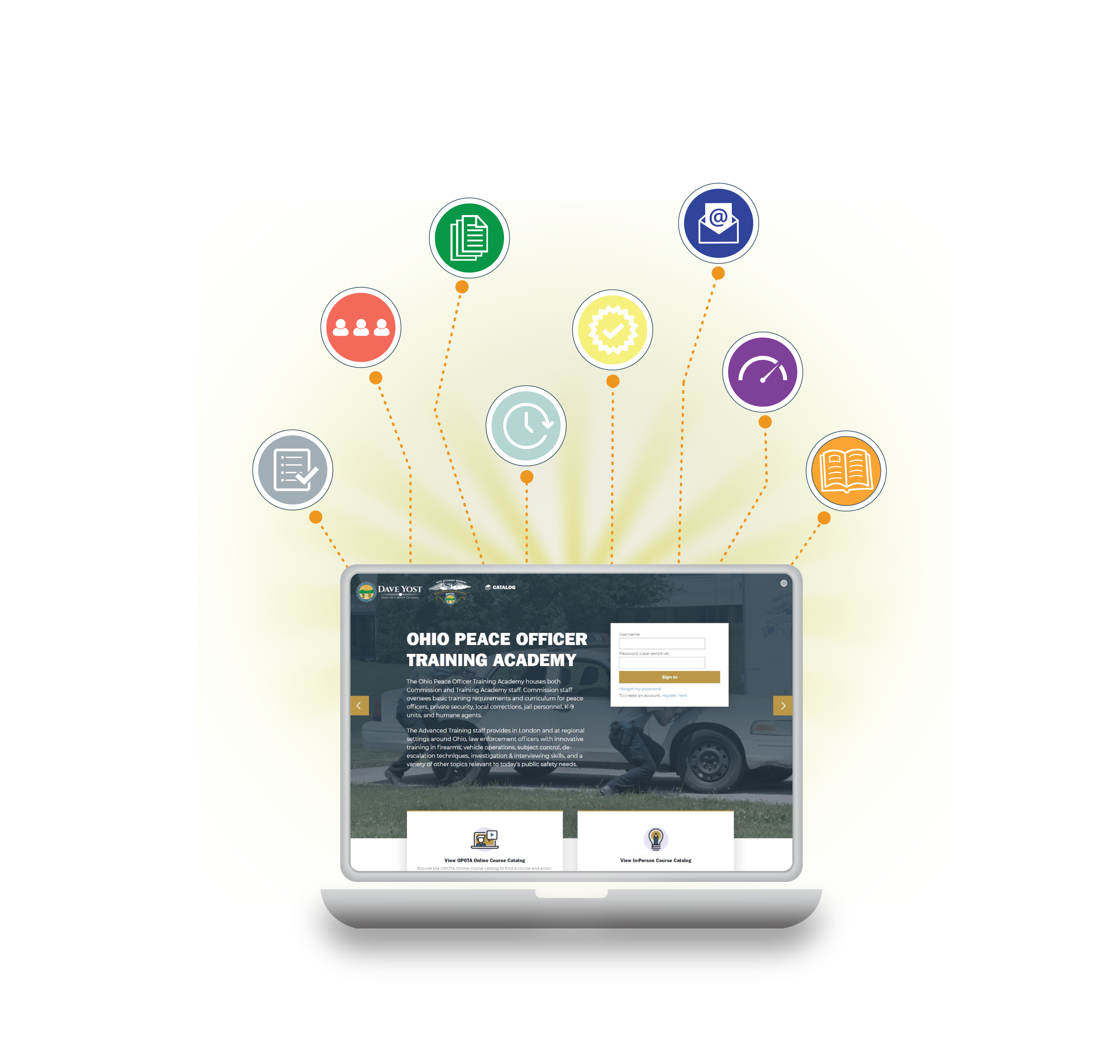
The days of passive online law enforcement training are numbered.
“The presumption is that you’re sitting there intensely watching and retaining all the information, but come on,” Attorney General Dave Yost said. “In real life, you’re being pulled away to take care of something else, you’re multitasking, your mind is wandering. Blame it on human nature — and an outdated approach to presenting online lessons.
“With the new OPOTA Online, we’re tossing out the things that didn’t keep officers’ attention and focusing on what is meaningful and useful.”
The new system will replace the old eOPOTA in the next month or so, offering a more user-friendly platform and updated content, with more coming.
The wholesale improvement is important because in 2019 — even before the COVID-19 pandemic struck — 73% of the Ohio Peace Officer Training Academy’s “students” opted for online classes. The appeal is obvious: Officers can complete training when it works for them, instead of rearranging their schedules to accommodate a far-away class.
“The old eOPOTA was like working with rotary phones compared with the new system,” said Dwight Holcomb, executive director of OPOTA.
“OPOTA Online offers much more flexibility — courses are designed to be cellphone-friendly, and the system is configured to remember officers’ spot if they get pulled away.”
The new platform also allows officers to register their own accounts, set their own passwords and customize their dashboards. The navigation is simple and intuitive.
“The experience will be a giant step forward from what you’re used to seeing from eOPOTA,” Attorney General Yost said. “And that goes beyond the design of the website to the course content and even the way the lessons are presented. What works in a face-to-face classroom, we now know, is not as effective online.”
Kim Eggerton, the e-learning design specialist OPOTA hired to create new course content, says successful online lessons avoid passive learning. “You can deliver content in any way — a video, a slide show, text, images,” she said. “But at intervals of about 5-10 minutes, you have to take a break and give the learner some time to reflect and apply what they’re learning.”
On OPOTA Online, those pauses will be interactive and built around, for example, mini-quizzes and activities such as sorting or matching. Feedback in response to officers’ answers is viewed as essential, given that e-learners can’t raise their hands to ask a question if they don’t understand a concept.
“Everything has to be as clear and concise as possible,” Eggerton said. “And we’re intentionally designing these classes for officers — they are professional adults with limited time and resources, meaning computers and things like that. So we are focused on making content relevant, scenario-based and impactful in an efficient way.”
At launch, OPOTA Online will offer:
- Roll-Call Refreshers: These concise, 101-level-type courses are designed to give quick-hit, useful information either as (1) reminders about basic topics, such as search warrants or direct and circumstantial evidence, or (2) necessary updates, such as explaining new laws. They fit into the time that departments might use for roll call but also can be easily accessed from a cellphone.
- Comprehensive, multipart courses: These classes provide a deeper dive into a subject in the newer and more-engaging format, potentially including multiple modules and interaction opportunities. Examples of topics are use of deadly force and search warrant preparation.
- Statutorily mandated subjects: Topics required by Ohio law — including child abuse, crisis intervention and missing persons — will all be available. Eggerton said such courses will be updated from the eOPOTA versions in both design and content, although they all won’t be fully overhauled when OPOTA Online goes live.
“When you have improved material to offer, it doesn’t make sense to sit on it and wait until every single piece is updated,” Yost said. “That would just be a waste for officers who could already be getting better training.”
Each course in OPOTA Online includes a survey that officers are encouraged to complete. Such input can be used to clarify points in courses or develop new material. In addition, every user has access to a personal massage center, from which they can contact OPOTA Online’s administrators.
“When we looked at what we wanted from the new OPOTA Online,” Executive Director Holcomb said, “high on our list were adding system stability — things should work when you click on them — and incorporating instructors who are fresh industry leaders and subject-matter experts. We emphasized those elements because local officers told us they wanted more of both.”
Such feedback has also prompted OPOTA to add in-person classes throughout the state — now at 20 locations and counting.
“These days we are constantly asking: ‘Do we need to do this in London? Do we have to do it in person?’” Yost said.
Sometimes the answer is yes, but even in those cases, OPOTA leaders hope to, down the road, embrace a hybrid approach by moving some portions of the class online, such as understanding foundations.
“The point,” Yost said, “is to minimize the time officers need to be away from their home base, to get them high-quality, inexpensive instruction while respecting their time.”
Special note
Before OPOTA Online goes live, the old eOPOTA must be turned off. OPOTA will contact agencies once that date is set so that any in-progress training can be completed before then. Officers will not be able to start a course in eOPOTA and complete it in OPOTA Online.